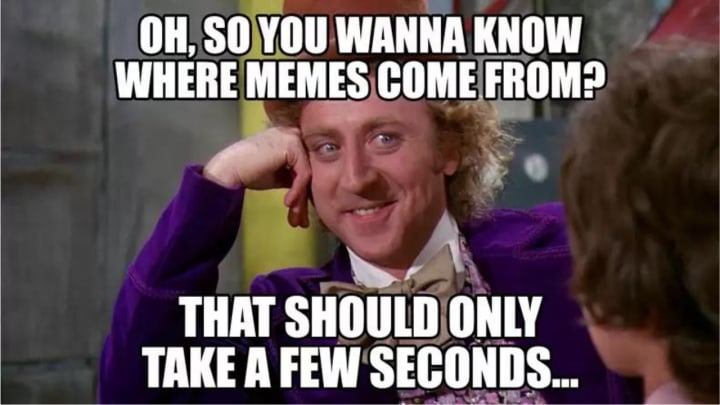Memes, the DNA of internet culture, have evolved from simple humorous images to complex entities that encapsulate humor, social commentary, and cultural identity. Their ability to spread rapidly and resonate with millions worldwide is not just a matter of chance but a psychological phenomenon deeply rooted in human behavior and social interaction. This exploration delves into the psychological underpinnings of memes, shedding light on why they’ve become an indelible part of digital communication.
The Essence of a Meme: A Dual-Core Structure
At their core, memes consist of a carrier and a message. The carrier, often a recognizable and culturally relevant piece of media, serves as the vessel for the message—a commentary that can range from the lighthearted to the deeply insightful. This structure allows memes to convey complex ideas in an accessible and engaging manner, leveraging familiarity and brevity to make an impact.
The Compulsion to Share: A Psychological Perspective
The virality of memes can be attributed to several psychological factors that compel us to share:
- Social Bonding: Memes act as a catalyst for social connection, allowing individuals to communicate shared experiences or humor, thus reinforcing social bonds.
- Social Currency: Sharing memes is a way to contribute to the cultural conversation, showcasing one’s awareness of trends and reinforcing one’s identity within a community.
- Emotional Expression: Memes serve as a conduit for expressing a wide range of emotions, offering both the creator and the sharer a form of emotional release.
- Cognitive Engagement: The human brain’s penchant for recognizing patterns and making connections is satisfied by memes, with their ability to distill complex ideas into simple, relatable content.
Humor’s Central Role in Meme Culture
Humor is the lifeblood of memes, driving their creation, dissemination, and reception. The psychological mechanisms behind meme humor include:
- Incongruity and Surprise: The humor in memes often stems from unexpected juxtapositions, challenging our expectations in ways that provoke laughter.
- Relief Theory: Memes can act as a pressure valve, allowing individuals to navigate societal anxieties or personal stresses through humor, offering a sense of relief.
- Shared Cultural Context: Memes rely on a common understanding of cultural references, creating an “in-group” where shared humor fosters a sense of belonging.

Beyond Humor: Memes as Vessels of Social Commentary
While memes are often associated with humor, their potential as tools for social commentary and identity expression is significant:
- Awareness and Advocacy: Memes have the power to highlight social issues, using satire and humor to engage audiences with topics they might otherwise overlook.
- Identity and Community Building: By sharing memes that reflect personal beliefs or humor, individuals carve out their identities and find communities with shared values.
- Cultural Critique: Memes often critique societal norms or current events, using humor to challenge prevailing narratives and encourage critical thinking.
Navigating the Shadows: The Ethical Considerations of Meme Culture
Despite their benefits, memes also raise ethical concerns, particularly around misinformation, cyberbullying, and hate speech. The same attributes that make memes powerful communicators—their humor, anonymity, and rapid spread—can also be exploited to disseminate harmful content. It’s crucial for both creators and sharers to be mindful of the content they propagate, ensuring that the cultural impact of memes remains positive.
Conclusion: The Multifaceted World of Memes
Memes are more than just fleeting internet jokes; they are a complex form of communication that reflects the human psyche’s intricacies. By understanding the psychological foundations of meme culture, we can appreciate their role in shaping internet culture, fostering community, and driving social change. As we continue to navigate the digital landscape, memes will undoubtedly play a pivotal role in defining the language of online communication, humor, and social commentary.



